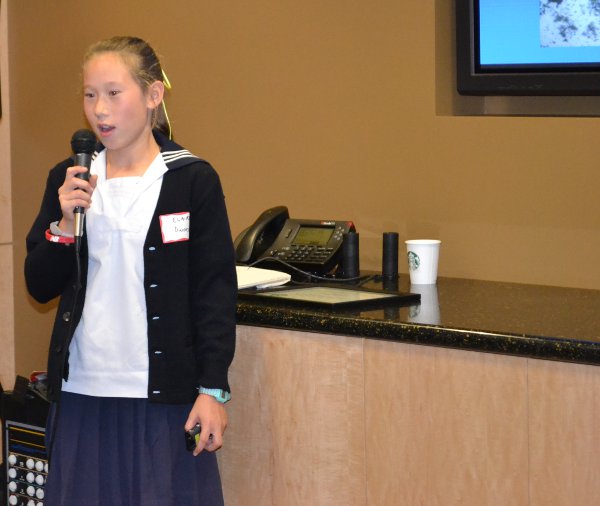December 13, 2011


SAN FRANCISCO — A young soccer player from San Francisco is making waves in the scientific community with her research on local playing fields. Claire Dworsky collected 110 water samples from 10 soccer fields across San Francisco, half of them with grass and half with artificial turf. Her research showed dangerous chemical run-offs from artificial turf. (Photo courtesy of Action for Nature)
[nggallery id=73 template=carousel images=4] [imagebrowser id=73] By Debra Atlas
SAN FRANCISCO — A young soccer player from San Francisco is making waves in the scientific community with her research on local playing fields.
Claire Dworsky, a fourth-grade student at Katherine Delmar Burke School, overheard adults debating the idea of converting a large area of San Francisco’s Golden Gate Park from grass to artificial turf and whether the plastic turf was healthy for the kids. Dworsky, an avid soccer player since she was age 3, wondered what was in the water she and her teammates were playing around in.
She decided to find out and took the issue on as a science project. Her project won the 2009 Kids Science Challenge, a national competition in which third- through sixth-graders submit experiments and problems for a group of scientists and engineers to solve.
Winning the challenge led to Claire partnering with marine scientist Adina Paytan, a professor at University of California, Santa Cruz’s Institute of Marine Sciences. Paytan worked with the inquisitive, young girl, teaching her how to collect and test water samples.
Dworsky collected 110 water samples from 10 soccer fields across San Francisco, half of them with grass and half with artificial turf. She then took the samples to Paytan’s UC Santa Cruz lab, where scientists analyzed them over the course of that summer. Before then, no such testing was ever done on the water from the different fields.
Dworsky discovered that most of San Francisco’s turf field runoff contained dangerously high levels of heavy metals and other toxic chemicals. The levels were in excess of state and federal guidelines. The water was not only potentially hazardous to kids but, because the artificial playing fields are situated near the ocean, the runoff water could be dangerous to marine wildlife as well.
“I wanted to influence the debate,” says Dworsky, “so decision makers don’t just look at the money but also ask themselves, ‘Is this what’s best for children who are exposed to this water? What’s best for birds and fish that are exposed to this water? What’s best for a baby who crawls on synthetic turf and its runoff? And what are the real costs of both grass and turf fields?’”
Her project, measuring and testing the water run-off from artificial turf, won third place in Action For Nature’s International Young Eco-Hero Award. [youtube]JJTPQ4-kbAA[/youtube]
Since winning these awards, Dworsky has presented her findings to a number of groups, and been featured in various media. She made a presentation at the San Francisco Parks and Recreation Department during a debate about synthetic turf fields in the city. At the American Geophysical Union’s conference, one of the largest gatherings of scientists in the world, she was the youngest person in attendance. Dworsky also was featured in EARTH Magazine, and Pulse of the Planet.
“Claire was selected because, at a very young age, she is taking a serious interest in an important and largely unexamined topic,” says Beryl Kay, executive director of Action for Nature. “She surely has a very bright future ahead of her.”
We at Sierra Club Green Home agree and look forward to hearing more from Dworsky. Check out more articles by Debra Atlas. © 2011 SCGH, LLC. ]]>